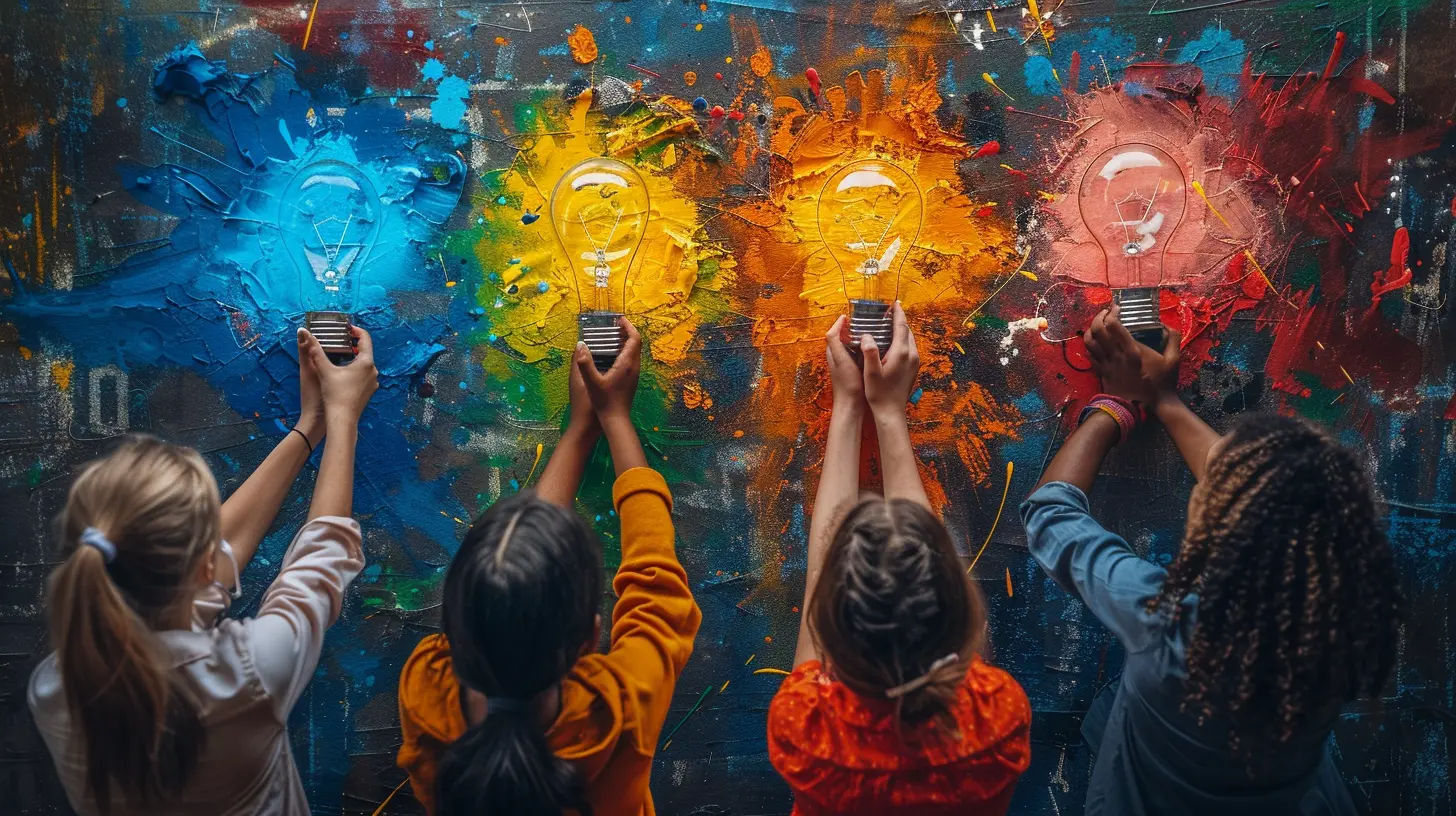How Extracurriculars Encourage Creativity and Innovation
21 September 2025
When we hear words like “creativity” and “innovation,” we often think of artistic geniuses or tech pioneers. But here's something most people overlook: these qualities aren’t just born—they’re built. And one of the most powerful factories for this kind of growth? Extracurricular activities.
Yep, those clubs, teams, and side projects that happen outside the traditional classroom are doing way more than just filling up time. They’re shaping young minds into creative thinkers and innovative problem-solvers.
So if you’ve ever wondered how extracurriculars go beyond just "extra," you're in the right place. Let's unpack how these activities ignite imagination, fuel innovation, and help students develop skills that’ll serve them for life.
The Magic of Stepping Outside the Syllabus
Let’s face it: typical classroom learning follows a script. There’s a curriculum, a textbook, and a set of standards students need to meet. And while that structure is essential, it often leaves little room for exploring the unknown.Enter extracurriculars.
Whether it’s a drama club, robotics team, student newspaper, or debate society, these activities live outside the traditional box. They offer freedom. And in that freedom? Creativity thrives.
When students are free to explore ideas without the pressure of grades or exams, their imaginations take the front seat. Suddenly, they're not just memorizing facts—they're applying knowledge in real-world settings. That’s where true learning (and innovation) happens.
Creativity Needs a Playground
Think about it: kids don’t learn to ride a bike by reading about it. They hop on, fall off, try again, and eventually figure it out. The same goes for creativity.Extracurriculars work like a playground for the mind. They give students a space where it’s okay to make mistakes, experiment, and try new things. In fact, trial and error is often the whole point.
Take a school art club, for instance. No one’s marking your painting with a red pen. You get to mix colors, experiment with techniques, and express emotions freely. That freedom not only builds artistic talent—it strengthens problem-solving skills, emotional intelligence, and the ability to think outside the box.
Different Activities, Different Skills
The magic of extracurriculars lies in their diversity. Not all students will be drawn to the same activities, and that's actually a good thing. Each type of extracurricular comes with its own flavor of creativity and innovation.1. Arts and Performance
This includes music, drama, dance, painting, photography, and creative writing. These activities practically ooze creativity.- What they spark: Self-expression, storytelling, emotional intelligence
- How they build innovation: Students learn to present ideas in unique, engaging ways and tap into the emotional core of communication
Ever tried to write a poem or perform in a play? Then you know it’s not just about the final product—it’s about rethinking the rules, pushing boundaries, and connecting with others on a deeper level.
2. STEM Clubs
Think robotics, coding clubs, science fairs, or math olympiads.- What they spark: Analytical thinking, tech skills, problem-solving
- How they build innovation: Students face real-world challenges that need creative solutions
You’d be surprised at how much artistic thought goes into building a robot or coding an app. STEM fields are highly creative once you get past the equations. These activities teach kids how to think like inventors.
3. Sports and Athletic Teams
You might not immediately think of soccer or basketball as creative outlets, but here’s the twist—they are.- What they spark: Teamwork, strategic thinking, adaptability
- How they build innovation: Athletes are constantly making split-second decisions, adjusting strategies, and finding new ways to win
In sports, creativity looks like a surprise play, a clever maneuver, or a team strategy no one saw coming. It's innovation under pressure.
4. Leadership and Service Organizations
Student council, volunteer groups, and entrepreneurship clubs fall into this category.- What they spark: Leadership, empathy, initiative
- How they build innovation: These activities often require planning events, rallying support, or launching initiatives from scratch
Ever had to organize a school charity event? It’s like running a mini-startup. These experiences teach students to pitch ideas, think ahead, and motivate others—key ingredients for innovation.
Boosting Confidence Through Creative Wins
Let’s not underestimate the confidence factor. One of the biggest barriers to creativity is fear—of failure, of judgment, of the unknown. Extracurriculars help tear down that wall.Here’s how:
- Students try new things in low-stakes environments
- They receive feedback in a more supportive, less competitive context
- Successes (even small ones) build momentum and motivation
Over time, students learn that creativity isn’t about always succeeding—it’s about showing up and taking a risk. And that shift in mindset? Total game changer.
Collaboration: The Secret Sauce of Innovation
Innovation doesn’t happen in a vacuum. It happens in conversation, through collaboration and shared ideas. That’s another huge win for extracurriculars.Most clubs and activities involve working with others. Students learn to:
- Communicate their ideas
- Listen to feedback
- Merge different perspectives into one project
Take something like a debate club. You learn to form arguments, but you also learn to anticipate counterpoints and adjust in real-time. That dynamic exchange is where real insights happen.
Or think about a band, where each member brings a different sound to the table. Alone, they’re good. Together? They make music.
Making Room for Innovation in Education
Here’s a bold question: what if the key to better education isn’t more tests or longer classes—but more extracurriculars?If we want to raise a generation of thinkers, creators, and doers, we need to give them the tools and spaces to create. That means recognizing the vital role extracurriculars play in shaping the innovators of tomorrow.
Schools should encourage (not sideline) these activities. Parents should celebrate them. And students should dive into them with curiosity and excitement.
Real-World Creativity Starts Here
Let’s bring it down to the everyday. When you join a school club or take part in an extracurricular, you’re not just building your college resume. You’re learning how to:- Think on your feet
- Take initiative
- Handle setbacks with grace
- Work well with others
- Express yourself clearly and confidently
These are the things employers look for. These are the traits startup founders, scientists, artists, and leaders rely on every single day.
The future doesn’t belong to people who just know the answers. It belongs to those who ask better questions, try new approaches, and keep moving forward—even when the path isn’t clear.
And guess what? That’s exactly what extracurriculars train you to do.
Not Sure Where to Start? Here's a Simple Guide
If you’re a student wondering how to jump in, try this:1. Follow your curiosity. What subjects or hobbies excite you?
2. Try something new. Don’t stick to what you already know. Growth happens outside your comfort zone.
3. Look for clubs at your school or in your community. Or better yet—start your own!
4. Stay open-minded. Even an activity that seems unrelated to your goals can teach you transferable skills.
5. Stick with it. Creativity blooms over time. Don’t quit just because it feels hard at first.
Final Thoughts
Extracurriculars are more than just a way to kill time after the school bell rings. They're a powerful engine for creativity and innovation. They give students the chance to explore, make mistakes, and think in ways that traditional classroom settings often don’t allow.So whether you’re a student, a parent, or an educator, remember this: the next big idea, invention, or breakthrough might just start with a high school club meeting on a Tuesday afternoon. Pretty awesome, right?
So go ahead—pick up that paintbrush, join that robotics team, get on stage, or start that book club. Your creative journey is waiting.
all images in this post were generated using AI tools
Category:
Extracurricular ActivitiesAuthor:

Eva Barker
Discussion
rate this article
1 comments
Erin Brooks
Extracurriculars truly unlock creative potential, fostering innovative thinkers ready to make a difference!
October 4, 2025 at 3:34 AM

Eva Barker
Thank you! I completely agree—extracurriculars not only enhance creativity but also equip individuals with the skills needed to drive meaningful change.


